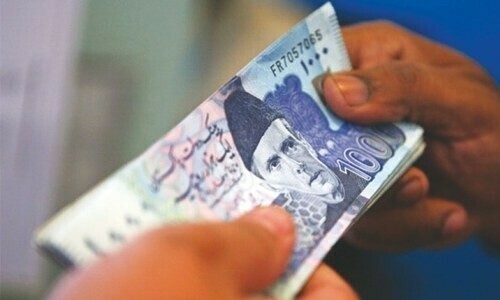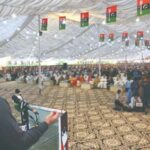KARACHI: In the past two months, the government has borrowed an additional Rs700 billion from banks, bringing its total borrowing from banks to Rs4.7 trillion.
According to the State Bank of Pakistan’s (SBP) most recent data, the government borrowed a record Rs4.69 trillion between July and March of this year.
The private sector’s borrowing has already decreased by 70% due to the massive borrowing, making this a challenging period for economic expansion.
The government appears to be overspending without taking the cost of borrowing into account, even in the face of substantial revenue receipts. Records are being broken by the government’s borrowing rates.
Analysts project that Rs7 trillion will accumulate by June, with a 70% decline in advances to the private sector.
The rate on six-month T-bills was raised by the government by 100 basis points to 21.39 percent in the previous auction, which took place on Wednesday. Throughout the fiscal year FY24, the majority of the borrowings were made at the same rate.
After borrowing Rs. 4 trillion, the caretaker government broke all previous records, but the next administration was unable to halt this borrowing pattern. Rs. 700 billion was borrowed by the government between January 19 and March 22.
Total government bank borrowings in FY22 and FY23 were Rs3.448 trillion and Rs3.716 trillion, respectively.
By the end of June 2024, some analysts predict that the current borrowing pattern might result in a total of between Rs6.5tr and Rs7tr. Although the government has been raising energy prices in an effort to raise more money, bank borrowing indicates that this revenue is insufficient to cover the government’s spending needs.
In addition to raising debt servicing, which makes up about 50% of the budget, the careless borrowing has reduced public sector development funding (PSDP). The economy is growing more slowly now that PSDP expenditure has been cut.
In FY23, the growth rate was negative; however, the present trend suggests that growth may be comparable to that of FY22. While domestic investment has dropped to a negligible degree, the private sector has been depending on its own resources to operate at the minimum level.
The economy of the nation has been growing at the slowest rate in the area, and during the first nine months of the fiscal year FY24, the highest rate of inflation remained at almost 27 percent. Over the past three months, inflation has started to decline, but the primary driver of the exceptionally low private sector borrowing rates is the interest rate, which is still set at 22 percent. The next monetary policy, which is slated for the end of this month, was expected to result in a major drop in interest rates, according to some experts.
Since the interest rate has made conducting business excessively expensive, the trade and industry have been pleading for a reduction in interest rates for a number of months. But inflation is the central bank’s primary objective. Throughout FY24, the SBP has maintained the interest rate at 22 percent in an effort to combat excessive inflation.








